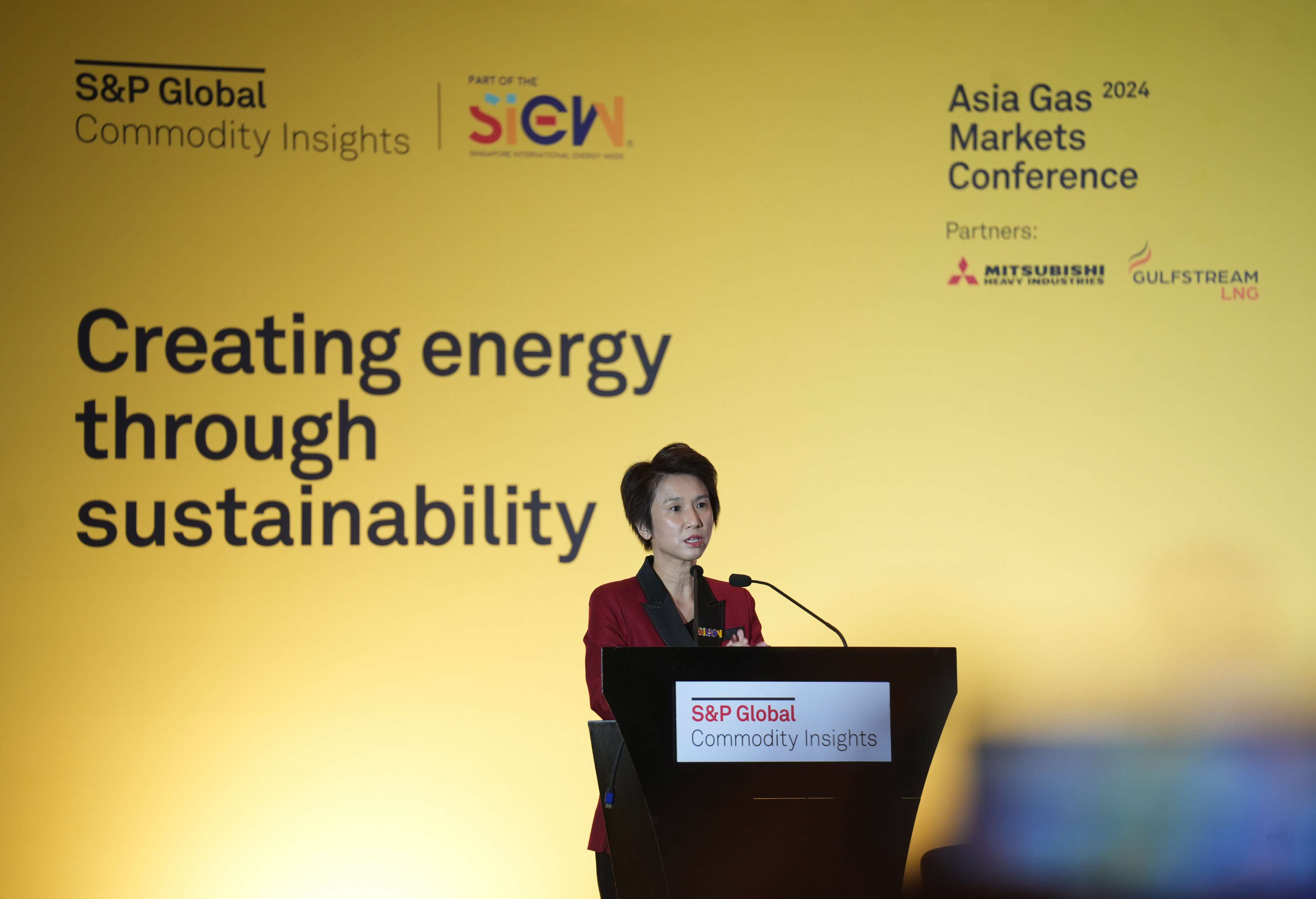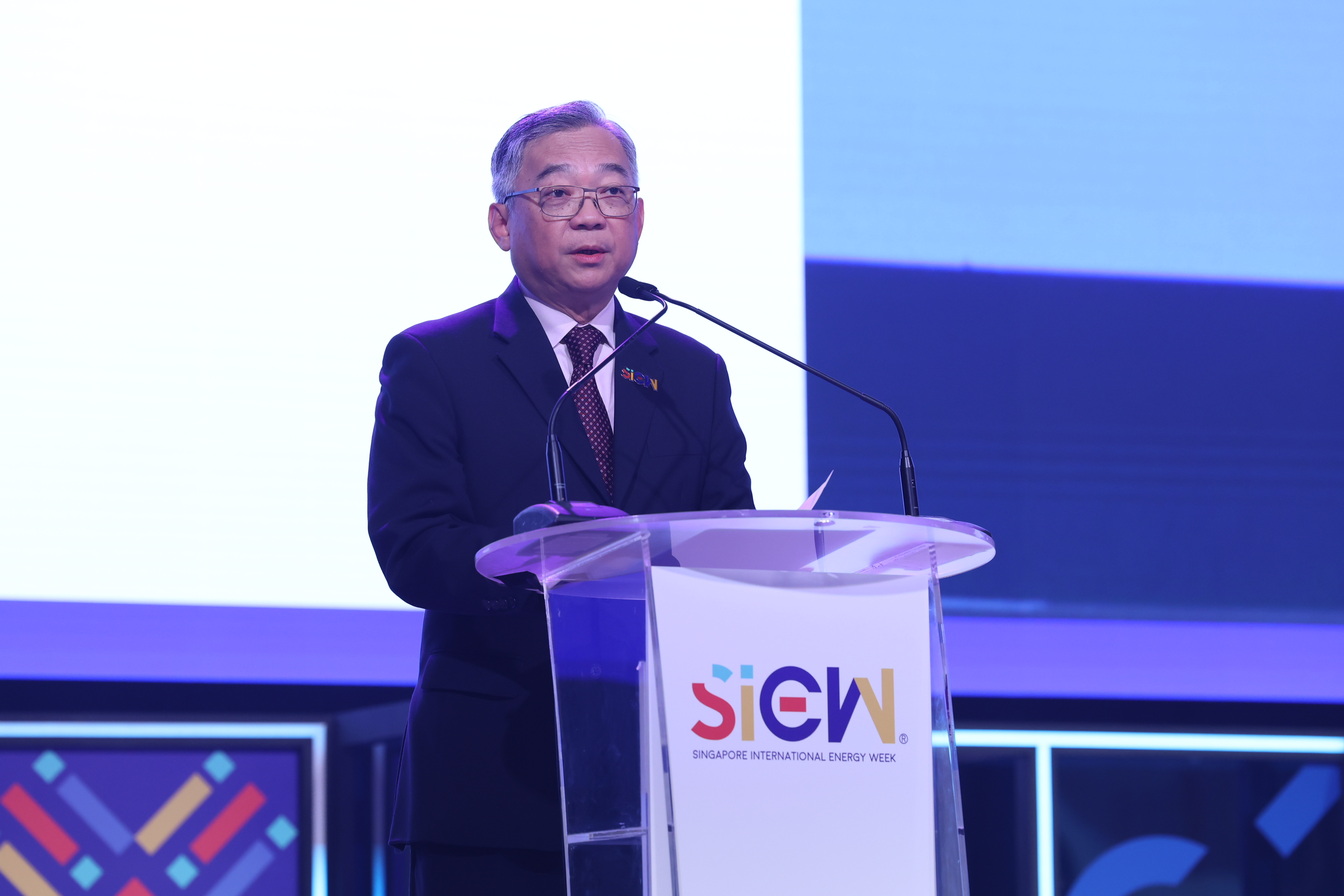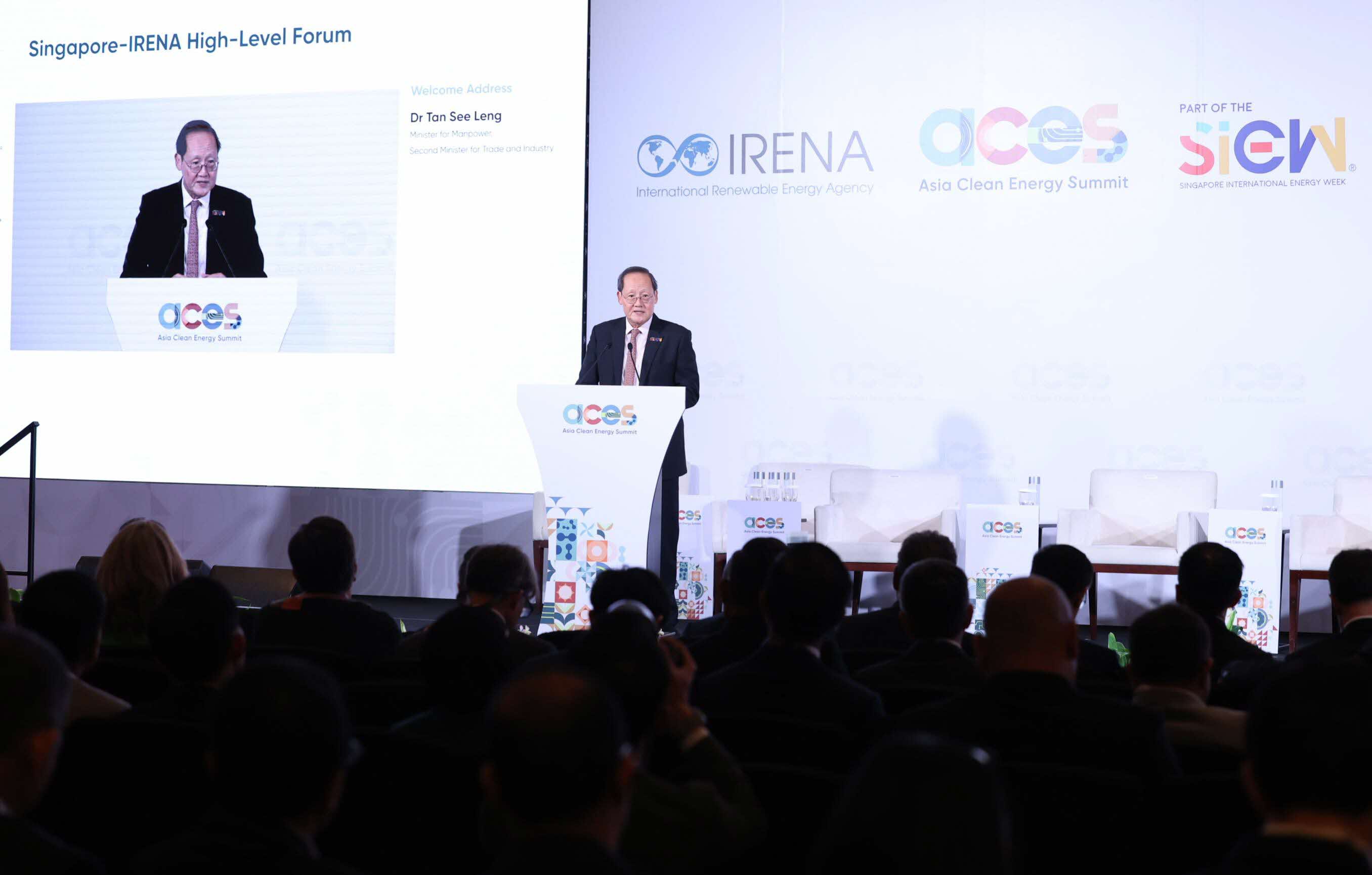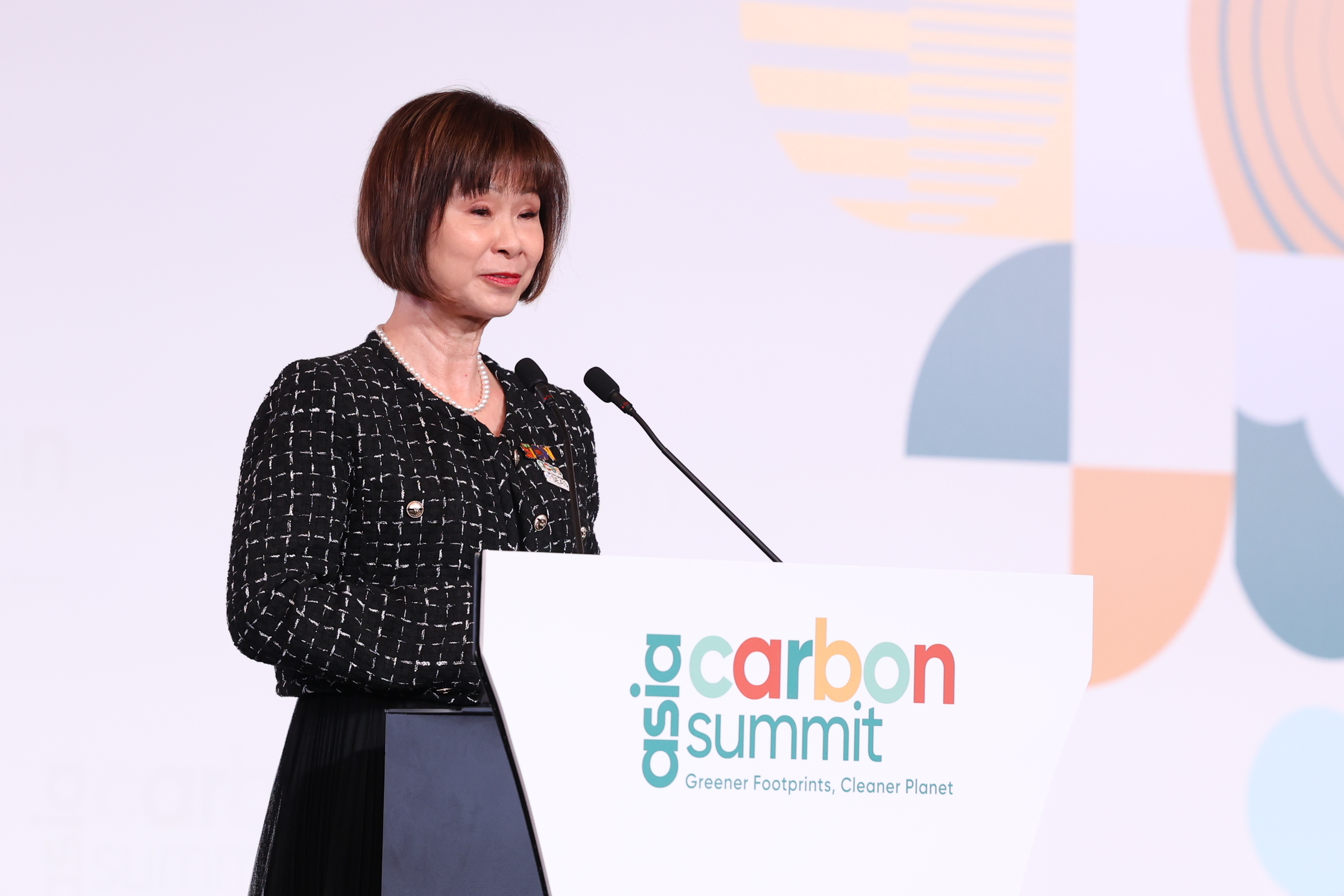The 17th Singapore International Energy Week (SIEW) welcomed more than 600 speakers and 18,000 delegates for a week of engaging conferences and exhibitions impacting the global energy landscape. From hydrogen's transformative potential to breakthroughs in energy storage, SIEW 2024 sparked pivotal conversations and spotlighted innovations that will influence Asia's energy future. The five points outlined next offer a glimpse into the region's evolving landscape.
Country-specific strategies key to Asia's successful transition
Adapting to local conditions is essential in the energy transition, even as sustainable technologies and solutions become more prevalent. Adopting a tailored approach to suit country specific needs to better manage costs more effectively was the consensus among leaders at SIEW 2024. This takes into consideration how developing nations face even steeper capital expenses, with the global energy transition projected to cost US$100 to US$200 trillion by 2050.
The global energy transition is projected to cost US$100-$200 trillion by 2050, with developing nations facing even steeper capital expenses. Ramesh Subramaniam, Director General and Group Chief Sectors Group, Asian Development Bank, underscored that the context differs from country to country and a one-size-fits-all strategy is no longer viable. A thorough understanding of these local factors is essential for developing cost-effective strategies to enhance project affordability.
Panellists also recognised that regional collaboration is essential to opening the pathways needed for a successful transition. One vision is for Southeast Asia to collaborate as a cohesive energy market, with harmonised standards and greater cross-border cooperation that could unlock new potential for shared growth and stability. This shift requires countries to take bold steps toward opening their energy sectors, moving beyond national interests to support regional resilience.
Natural gas was highlighted as a vital transition fuel, providing a reliable, lower carbon alternative that supports renewable capacity as it continues to scale up. In Southeast Asia, natural gas ensures energy security and affordability during this transition.

Low Yen Ling, Senior Minister of State, Ministry of Culture, Community and Youth & Ministry of Trade and Industry, Singapore, reiterated in her Opening Remarks the importance of stable pricing and long-term infrastructure investments. She emphasised that these factors are crucial for natural gas to continue supporting the region's energy needs as it advances renewable energy adoption. Mark C. Christie, Commissioner of the United States Federal Energy Regulatory Commission, also highlighted sources such as natural gas and nuclear energy as dispatchable resources that are essential for meeting rising energy demand and ensuring grid stability.
Grid resilience as the foundation for renewable energy

As Southeast Asia accelerates its renewable energy transition, building a resilient and flexible power grid is critical. Industry leaders emphasised the need for grid to handle the variability of renewable sources like solar and wind. Energy Storage Systems (ESS), such as Singapore's 200MWh ESS — Southeast Asia's largest — are crucial to stabilising the grid and ensuring reliability. Singapore is also piloting flow battery systems on Jurong Island and has awarded S$7.8 million in grants to support innovative storage solutions.
In his Singapore Energy Lecture, Deputy Prime Minister (DPM) and Minister for Trade and Industry Gan Kim Yong announced Singapore's Future Grid Capabilities Roadmap which will be launched later this year. The roadmap focuses on enhancing grid resilience through harnessing Distributed Energy Resources (DERs) and enhancing grid planning with digital solutions like the Grid Digital Twin. Virtual Power Plants are also being explored to aggregate DERs and boost grid flexibility. These innovations are key to managing the increased integration of renewables like solar and wind, especially as large projects such as SunCable's 1.75 gigawatt (GW) solar power imports from Australia commence.
H.E. Keo Rottanak, Minister for Mines and Energy, Kingdom of Cambodia, in the SIEW Ministerial Dialogue emphasised that regional interconnectivity, such as the ASEAN Power Grid, can improve energy inclusivity and reduce the cost of transition. Dr Daniel Gaspar, Net Zero World Initiative Deputy Director also noted that electricity cost could be reduced by 3-3.9%, while GDP could increase by 0.8-4.6% per country in ASEAN as a result of enhanced regional power grid connectivity.

During the Singapore-International Renewable Energy Agency High-Level Forum, Dr Tan See Leng, Minister for Manpower and Second Minister for Trade and Industry, highlighted that “there can be no transition without transmission" in recognition of the need for interconnector infrastructure to realise the ASEAN Power Grid vision. He also reiterated that greater grid interconnectivity allows us to maximise the region’s diverse renewable energy potential by matching renewable energy-rich areas to demand".
SIEW 2024 also saw the discussion of the Phase III of the ASEAN Plan of Action for Energy Cooperation (APAEC), which focuses on expanding infrastructure, enhancing digitalisation and smart grids, and advancing renewable energy and Carbon Capture, Utilisation and Storage (CCUS) developments. Panellists shared successful cross-border mechanisms, showcasing best practices for enhancing regional connectivity. The launch of the International Energy Agency (IEA) Regional Cooperation Centre in Singapore will further drive collaboration and innovation to support the region's energy transition.
Hydrogen's 400-million tonne challenge
Hydrogen took centre stage at the inaugural Singapore-US Forum as a potential catalyst for global decarbonisation. Yet the scale of the challenge remains immense. To achieve net zero by 2050, 400 million tonnes of clean hydrogen will be required. However, industry discussions revealed that progress on hydrogen infrastructure remains slow due to high costs and limited demand.
DPM Gan reiterated hydrogen's role in Singapore's energy strategy. In particular, green and blue hydrogen is seen as a promising solution for decarbonising Singapore's power sector. However, achieving this vision requires robust, well-integrated supply chains, scalable infrastructure for storage and distribution and supportive policies to ensure long-term cost reductions in transport and storage.
Industry leaders emphasised the need for massive infrastructure investments, international collaboration, and innovation. Hydrogen's potential to act as a clean energy carrier hinges on resolving these challenges, which are vital for scaling its use in Asia. Singapore, by advancing hydrogen initiatives and building global partnerships is positioning itself as a key player in commercialising hydrogen solutions. Dick Richelle, Chairman of the Executive Board and Group Chief Executive Officer, Royal Vopak, highlighted that aligning technology, infrastructure, production, and demand is essential for establishing robust supply chains.
CCUS and ammonia were highlighted as essential complementary technologies to hydrogen, with the latter emerging as a promising hydrogen carrier for transport and co-firing in energy generation. Experts at SIEW 2024 emphasised CCUS's role in decarbonising hard-to-abate sectors, noting that targeted funding and cross-border storage options could catalyse deployment across Southeast Asia. Meg O’Neill, Chief Executive Officer and Managing Director of Woodside Energy, emphasized the need for supportive policies to provide financial support for carbon capture and sequestration, such as the US’s Inflation Reduction Act. Izumi Kai, Chief Executive Officer, JERA Asia added that new technological developments are also crucial to incentivise carbon capture and further promote decarbonisation efforts. Singapore’s commitment to these technologies includes a new power sector-specific grant call for carbon capture feasibility studies on Jurong Island, reinforcing its diversified approach to decarbonisation.
Carbon markets as an enabler of Asia's decarbonisation

Discussions highlighted the vital role of carbon markets in supporting Asia's decarbonisation amid rising energy demands. In his address, Dr Fatih Birol, Executive Director, IEA, forecasted that over 25% of global energy demand growth will come from Asia in the next decade. Carbon markets offer a pathway to reduce emissions while driving economic growth.
Senior policymakers including Dr Amy Khor, Senior Minister of State for Sustainability and the Environment of Singapore, underscored the need for robust infrastructure to support carbon markets. She also highlighted the importance of innovative financing models, such as transition credits, to unlock the full potential of carbon markets and aid in phasing out high-emissions energy sources like coal. In addition, industry leaders stressed that carbon pricing and emissions trading can create incentives for businesses to lower emissions, with blended financing models helping to reduce risks and attract private capital for scaling decarbonisation projects.
Dr Khor also noted Singapore's efforts to establish a reliable data infrastructure through initiatives like the Climate Action Data Trust. This aims to enhance transparency and credibility across carbon markets by harmonising data.
Nuclear energy’s dual paths: Fission and Fusion for a sustainable future
Nuclear energy is entering an exciting new era, with both fission and fusion technologies emerging as pivotal contributors to a sustainable future. Fusion energy, often seen as the next frontier in nuclear innovation, offers a compelling vision of an abundant energy source that also has no carbon emissions.
In his speech at SIEW 2024, DPM Gan stressed that Singapore is keeping a close watch and has taken key steps to build up capabilities, highlighting the nation’s continued commitment to better assess the suitability of nuclear technologies.
In the meantime, there is recognition that nuclear fission would continue to play a vital role, with the World Nuclear Association projecting nuclear capacity to triple by 2050. During a special address, H.E. Rafael Mariano Grossi, Director General of the International Atomic Energy Agency, emphasised that nuclear energy has the potential to serve as the foundation for clean energy systems worldwide, with a forecasted growth of at least 40% to 2.5 times greater than today's levels.
Nonetheless, safety remains a top priority. Dr. Jean-Christophe Niel, Director General of the Institute for Radiation Protection and Nuclear Safety, stressed during a panel discussion that the development of new technologies must involve all stakeholders and be accompanied by a high level of safety.